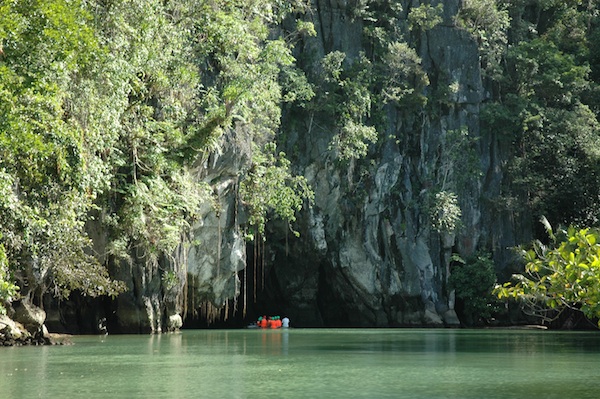Towards a Model City in Sustainable Development
The Palawan Biosphere Reserve is a cluster of islands composed of one long main island and smaller groups of islands around it. La 1,150,800 hectares of the biosphere reserve include the entire Province of Palawan Island, which is the westernmost province of the Philippines.
Puerto Princesa, capital of the Palawan province, is also known worldwide thanks to the underground river flowing close by, where the Puerto-Princesa Subterranean River National Park was created. The park was included in UNESCO’s World Heritage List in 1999.
Puerto Princesa es una ciudad multipremiada y pionero para las iniciativas ambientales en las Filipinas. ‘The City in a Forest’ is the designation that embraces the sustainable city strategy.
Solar and hydro power for a sustainable city
En junio 2010 the City of Puerto Princesa formed a technical partnership with Optimal Power Solutions (OPS) in order to address the city’s power shortage, actualmente se estima en 5 a 10 MW.
Un problema constante y significativo ha sido el suministro de energía sostenible para Puerto Princesa. Actualmente, grupos electrógenos diesel proporcionan una capacidad de 30 MW de energía a los habitantes de Puerto Princesa. OPS y el plan del Ayuntamiento para diseñar e implementar fuentes de energía renovables para generar energía eléctrica adicional, reducir el consumo de combustible diesel y promover un futuro energético viable y sostenible. Se prevé que las nuevas fuentes de hasta renovables 10 MW se integrará más fases sucesivas. Esta capacidad renovable dará prioridad a la exportación de energía fotovoltaica a la red para un mejor apoyo y un menor uso de los generadores diesel actuales. Fase Uno de 1 MW progresando hasta 2MW, 5MW y finalmente 10 MW que prevé el futuro crecimiento de la carga de la Ciudad.
Además, the Palawan Electric Cooperative (PALECO), the City Government of Puerto Princesa and WEnergy Global PteLtd have signed a Memorandum of Understanding (MoU) for the development of a hybrid electric power plant (1.5 MWp) to cover electricity supply of the Baranguy Cabayugan.
Hydro power is also part of the city’s energy strategy. Los 3.4MW hidro-turbinas gemelas proporcionan por lo menos 32 million kWh of electricity to the Palawan grid. Hydropower will replace the old and expensive to run NPC generators.
Más casas energéticamente eficientes
El aumento de la población urbana de Puerto Princesa ha dado lugar a la congestión en el área de la bahía de la ciudad, amenazando la calidad de la gente de la vida y áreas de reserva costeras. Los proyectos de vivienda en la costa en Puerto Princesa City han sido diseñados para reducir la demanda de energía mediante el aumento de la luz natural, mejoras en la ventilación, el efecto de enfriamiento del material de cubierta y la plantación estratégicamente al menos un árbol de fruta por hogar.
Los ahorros potenciales anuales de carbono se estima en, al menos, 72 toneladas para la 330 hogares. Otras características verdes de los proyectos de vivienda incluyen la instalación de una instalación de captación de agua de lluvia que reduce la demanda de agua de bombeo, prohibir el uso de la madera para el techo y los marcos interiores y un sistema de eliminación adecuada de los no reciclables y no biodegradables.
Transporte público más ecológico
The local government of Puerto Princesa has entered a partnership with the Institute for Climate and Sustainable Cities (CAPI), a non-governmental organization based in the Philippines working on “sustainable energy solutions and fair climate policy.” This partnership is under the Climate-Friendly Cities initiative of the iCSC, an initiative which combines waste management, programas de transporte sostenible y la generación de energía renovable para el desarrollo sostenible, climate-resilient city and community development.
Actualmente, Puerto Princesa has electric jeepneys (e-jeepneys) in the local government fleet and for private use, as well as electric tricycles (e-trikes), que son improvisados vehículos de tres ruedas de las motocicletas. El concepto de e-jeepneys fue desarrollado por la CAPI a través de una financiación por la fundación holandesa, DOEN. E-jeepneys se introdujeron en Puerto Princesa en 2009, con la cooperación política juega un papel importante en la institucionalización de los vehículos eléctricos como el transporte público. The power requirements of the electric feedjeeps and tricycles will be partly covered by the Waste-To-Energy project, jointly developed with the Institute of Climate and Sustainable Cities.
Reducing tourism’s carbon footprint
Puerto Princesa is currently among the top 10 major tourist destinations in the Philippines, and is striving to be the country’s number one tourist destination for eco-tourism.
Puerto Princesa has extended the concept of energy sustainability to the tourism sector, one example being its participation in the SWITCH-Asia ‘Zero Carbon Resorts’ project that seeks to enable tourism SMEs, tales como hoteles y resorts, para ofrecer sus servicios de energía de forma eficiente, rentable, y ambientalmente sonido.
El proyecto se aplica la estrategia 3R: Reducir-Cambiar-Rediseño. El primer paso es reducir el consumo de energía en los hoteles y resorts, y el segundo paso es reemplazar los dispositivos basados en combustibles fósiles ineficientes con mejor, tecnologías más ecológicas. En la etapa de rediseño, a showcase ‘Zero Carbon Cottage’ will be built in Palawan, que operará el uso de energía solar- y sistemas de generación de energía a base de biomasa.
Lessons learned and replicability
Consistent with the vision of an environmentally sustainable city, Puerto Princesa will take a lead role in promoting environmental stewardship building mutual support and cooperation with cities in the Asia-Pacific region.
The ‘City in the Forest’ becomes the stage for the future of energy supply in The Philippines by enabling the mix in energy to contribute to stable prices for consumers and the mitigation of global warming.


















